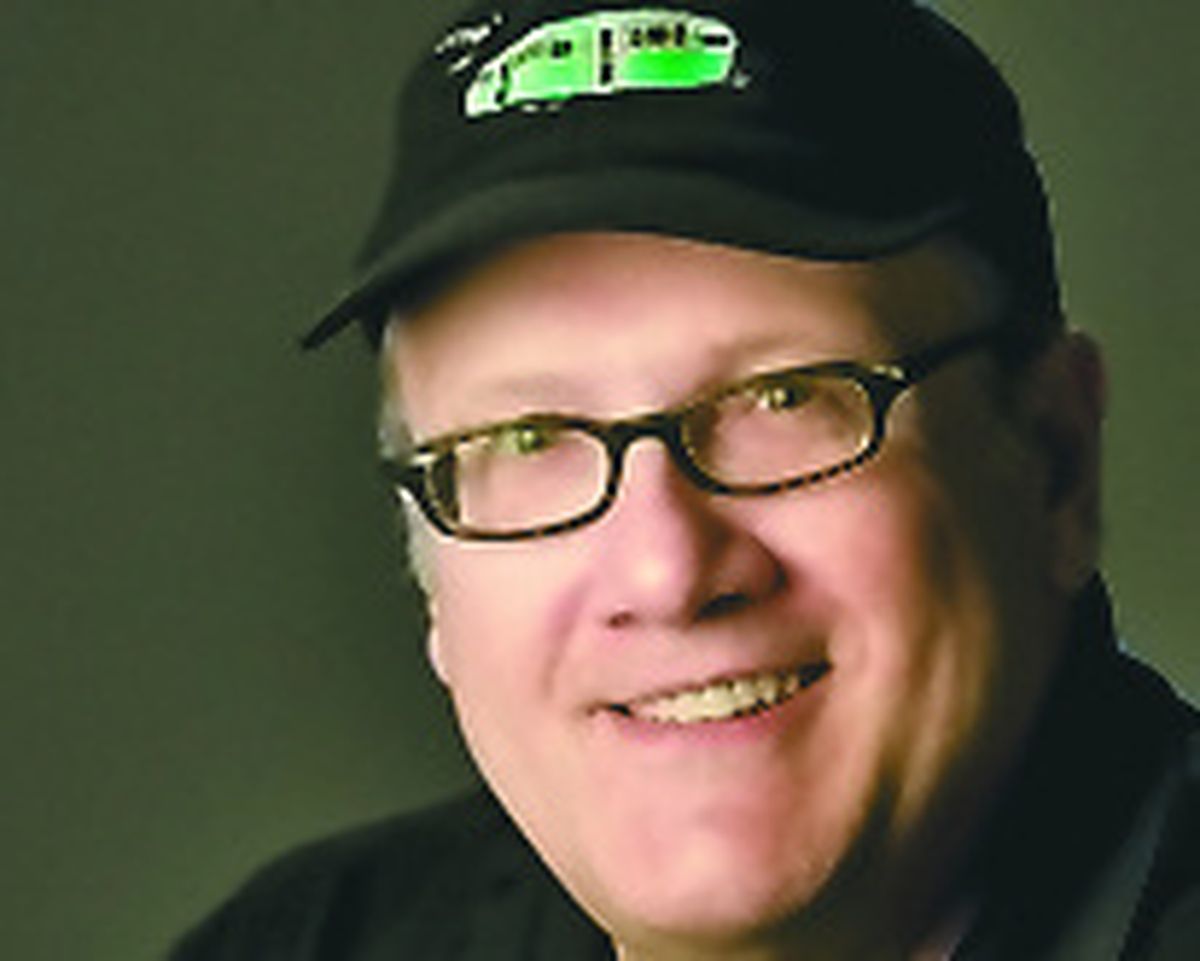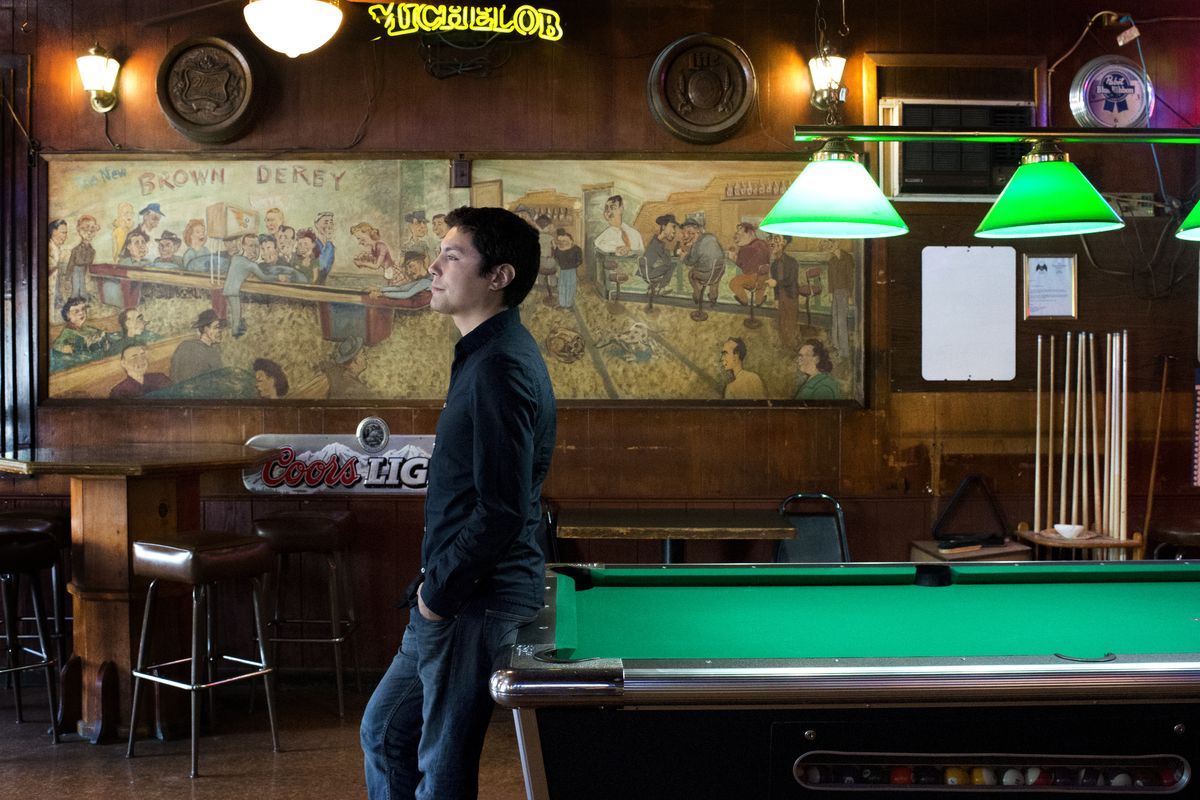This column reflects the opinion of the writer. Learn about the differences between a news story and an opinion column.
Doug Clark: Who are those people in the Brown Derby’s mural?
Casey Yahrling, part owner of the Brown Derby Tavern, stands Wednesday in front of a 1950 mural depicting customers of the time. (Tyler Tjomsland)Buy a print of this photo
The beer’s cold and fresh. The pool tables are covered with fresh felt.
But the freshest attraction inside the Garland District’s iconic Brown Derby Tavern is a 65-year-old painting that depicts a frozen moment in Derby time.
“The Mural,” some pub lovers call it.
Prominently placed at eye level along a west wall, the 11-by-4-foot artwork is populated with humorous caricatures of actual Brown Derby customers who frequented the bar in 1950.
And therein lies the mystery of The Mural.
Time, alas, has dimmed memories about who exactly inhabits this scene.
Supposedly there’s a list somewhere that assigns names to figures.
Trouble is, nobody knows where the dang thing went.
The puzzle has been nagging at the Derby’s new owners, Dave Jones and his sons Sean and Casey Yahrling.
The three took over the Brown Derby in March. They would love to know who’s who in the artwork they’ve been looking at day after day.
“A lot of people talk about it,” said Jones, who also owns the famed Ferguson’s Café located next door to the Brown Derby.
A guy in his 70s, he said, came into the pub not long ago and pointed to one of the figures.
“That’s my dad,” he told Jones.
Others have pointed out uncles and friends of friends. Some have spotted individuals who were once well-known fixtures in this great Spokane neighborhood.
One thing is sure.
Bill Swanson created this wonderful piece of now-vintage art.
His signature appears on a corner of The Mural, right above the year, 1950. Plus Swanson, according to Brown Derby lore, put himself into the painting not once, but twice.
He’s the grinning, bespectacled redhead who appears on each end, said Mike Whipple, who owned the Brown Derby 17 years before selling it to Jones.
Several years ago, Whipple said, some of Swanson’s family members stopped at the bar and pointed him out.
Whipple loves The Mural as much as anyone.
Someone, in fact, once tried to buy it from him. The only way that would ever happen, Whipple replied, is if he plunked down $220,000 and bought the bar, too.
Now that’s a pricey piece of art.
I gave a shot at researching this riddle but didn’t come up with much.
Pawing through packets of yellowed story clips in the newspaper morgue turned up no references to The Mural or Swanson.
Maybe I need to look harder.
I did, however, learn from a story that the 1933 Spokane city directory listed the tavern site as the Brown Derby Fountain and Lunch. The name turned alcoholic with the demise of Prohibition on Dec. 5, 1933.
The Brown Derby, Whipple said, was one of the very first Spokane establishments to grab a liquor license.
Neighborhood pubs played an important socialization role in those pre-TV days.
The Mural reveals the bar as the very definition of congeniality. It is crowded with 38 happy patrons on what may have been a typical bustling Friday or Saturday night.
Oops, make that 37 happy patrons once we eighty-six a redundant Swanson.
The Mural is a delight to gaze at. Customers crowded around a shuffleboard table. Three dogs (one sleeping) and a cat can be spotted. The bar stools are mostly occupied.
By men only.
That gender gap came to my attention thanks to Ginnie, who was seated at the bar during one of my recent Brown Derby visits.
She was right, though. Women in The Mural are either seated properly in booths or standing by the shuffleboard table.
One woman is seen serving an armload of beers.
What a great artifact this is.
I’m hoping that somebody out there knows more about it. Until we do, I’m encouraging Jones & Sons to get a journal and start keeping track of The Mural IDs that pop up.
Case in point: While I was there, an affable customer named Bob Peterson told me he was positive the blond-haired woman in a yellow dress was someone who once owned a business in the Garland District.
I’m holding off on the name, however, until I can confirm the spelling.
Another Derbyite had an altogether different theory about The Mural.
“This could be a Rod Serling thing,” Dave Luders said. “Look at them, they’re all looking at us!”
I get it. After closing time, when the lights switch off, it’s 1950 again and the inhabitants of The Mural are partying on in the neon glow of the Twilight Zone.
Bartender, I’ll take two of whatever Luders is drinking.



